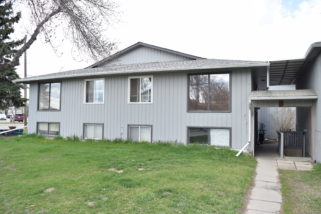New Research by the Real Estate Investment Network which Glen Godlonton is a member of States: The construction of new arenas and stadiums has a positive impact on real estate values for nearby homes.
“A key highlight of the research findings is: Homes in neighbourhoods close to new stadium builds — or proposed stadium builds — on average, have premiums ranging between three per cent and 15 per cent, depending on the different types of housing, parking options available, and the distance from the stadium itself,” said Don Campbell, senior analyst with REIN.
Campbell said the report is of particular interest in Alberta where a new hockey arena is being built in Edmonton and a new arena/stadium is being proposed for Calgary’s West Village.
The full REIN report, which examines the positive and negative ripple effects that professional sports facilities have on real estate values, will officially be released at this weekend’s Real Estate Investing Forum in Edmonton.
Preliminary findings from the report indicate an arena’s positive impact on housing values can be felt most within a five-kilometre radius and “has the largest effect when appealing architecture, community plazas, park landscapes, retail, commercial, and entertainment spaces, and the stadium’s construction itself are incorporated into its design.”
“A negative effect on property values is felt when the costs of proposed stadium necessitates the increase of property taxes,” said the report.
Building something as iconic and important to the identity of Calgary as the proposed West Village complex would add tremendous value to the local area as the overall area development advances.
“West Village will become an entertainment, lifestyle and dining destination and the resulting mixed-use component of the surrounding West Village development will make it walkable and convenient. The complementary mixed-use design of the overall area will redevelop under-used prime real estate in the inner-city to a higher land usage and bring tremendous traffic and potential to the area. Traffic, noise and other design considerations have to be considered and I hope the area would have a good mix of new residential, commercial and retail options.”
Melanie Reuter, director of research for REIN, said the organization looked at studies done across North America and Europe and it found a positive impact on real estate values around a new stadium/arena.
“Those values were most impacted within one kilometre of the new arena. And then those values diminished until we go to five kilometres and then there was no value increase at all, no effect,” said Reuter.
“Now the one caveat is parking. The new arena has to accommodate all the vehicles that need or want to be there, otherwise that causes just a disaster for the local resident and that could negatively impact property values.”
The report said housing values increase on average 1.75 per cent for each 10 per cent decrease in distance from a stadium, with the positive price increase being highest for homes in closest proximity to the stadiums and decreasing gradually outward within the radius.
“When a stadium is located outside the downtown core of a city, and is not connected to any other economic development activities or an urban redevelopment program, residential property values around the facility will still see a positive increase in value. However, this increase will not be as dramatic as those that are built in, or with nearby accessibility, to the Central Business District,” said REIN.
“While close proximity to the stadium usually results in the largest price increases, the regular presence of fans may lead to a constant source of noise, incivilities, traffic congestion and a scarcity of parking. These are all factors with the potential to create a price depreciating effect.”


































